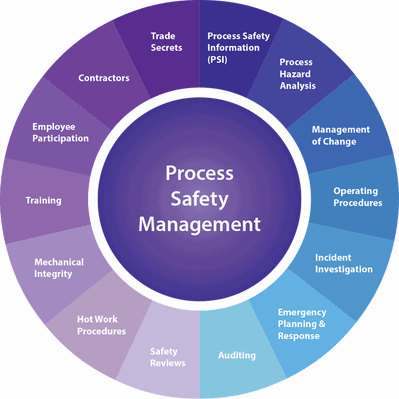#ProcessSafetyServicesMarket
Explore tagged Tumblr posts
Text
Process Safety Services Market Future Trends Shaping Industrial Risk Management and Operational Resilience
The process safety services market is entering a dynamic phase of transformation as industries across oil & gas, chemicals, pharmaceuticals, and energy sectors increasingly prioritize safety, efficiency, and compliance. Evolving global regulations, digital transformation, and growing awareness of industrial hazards are key factors propelling the growth and innovation within this market. Companies are now moving beyond traditional compliance-based safety models and investing in forward-looking, proactive strategies to minimize risk and enhance sustainability.

Rise of Digital Process Safety Solutions
One of the most significant trends shaping the future of process safety services is digitalization. The integration of Internet of Things (IoT), AI-driven analytics, and cloud-based systems is revolutionizing how companies manage safety risks. Real-time monitoring and predictive maintenance are becoming standard practices, allowing for faster identification of anomalies and early intervention. These technologies not only improve safety outcomes but also reduce downtime, increase operational efficiency, and offer long-term cost savings.
Digital twins—virtual replicas of physical systems—are also gaining popularity as a tool to simulate process scenarios and test the impact of different operational decisions. They enable industries to anticipate potential failures and implement corrective actions before an actual incident occurs, making them an integral part of modern safety strategies.
Stringent Global Safety Regulations
Regulatory frameworks around the world are becoming more rigorous, compelling companies to strengthen their safety processes. Governments and international organizations continue to enforce stricter safety compliance mandates in sectors dealing with hazardous materials or high-risk operations. These regulatory pressures are pushing businesses to adopt third-party process safety services that ensure adherence to standards such as OSHA’s PSM (Process Safety Management), Seveso directives in the EU, and similar regional guidelines.
To remain competitive and operational, companies are investing in comprehensive audits, hazard and operability studies (HAZOP), quantitative risk assessments (QRA), and safety instrumented systems (SIS). The need for continuous regulatory compliance is fostering long-term partnerships between industrial operators and process safety service providers.
Growing Demand for Customized and Scalable Solutions
As industries become more diverse and complex, one-size-fits-all safety models are becoming obsolete. The market is seeing rising demand for customized and scalable solutions tailored to specific industrial environments and risk profiles. Companies are increasingly seeking service providers who offer flexible engagement models—from standalone assessments to end-to-end safety lifecycle management.
In particular, small and mid-sized enterprises (SMEs) are looking for affordable yet effective solutions that can evolve with their business. Modular safety programs that allow incremental implementation of safety measures over time are becoming more popular in this segment.
Emphasis on Human Factors and Organizational Safety Culture
Technology and regulation are critical, but human factors remain central to effective process safety. As a result, future trends in the process safety services market include greater focus on training, behavioral safety, and fostering a culture of risk awareness within organizations. Service providers are incorporating human error analysis, competency development programs, and leadership engagement strategies to support sustainable safety practices.
By promoting a culture of safety from the top down, companies are more likely to embed risk-awareness into everyday operations. This shift is crucial for industries dealing with hazardous substances, where even minor lapses can result in significant disasters.
Sustainability and ESG Integration
Another emerging trend is the integration of process safety into broader Environmental, Social, and Governance (ESG) strategies. Stakeholders are holding companies accountable not only for profitability but also for the safety of workers and environmental stewardship. As industries aim to achieve carbon-neutral or eco-friendly operations, safety services are evolving to support safe handling of new technologies like hydrogen fuel, bio-based chemicals, and renewable energy systems.
This intersection of safety and sustainability is driving innovation in how safety risks are assessed and mitigated, particularly in emerging green technologies that come with their own unique set of hazards.
Global Expansion and Industry Consolidation
The process safety services market is witnessing global expansion as companies across emerging economies increase their focus on industrial safety. Asia-Pacific, Latin America, and the Middle East are particularly ripe for market growth, with rapid industrialization and increasing investments in infrastructure and energy projects.
At the same time, the industry is experiencing consolidation, with major players acquiring specialized safety firms to expand their portfolios and geographical reach. This consolidation is expected to enhance service quality and offer integrated, multi-disciplinary safety solutions to clients.
Conclusion
The future of the process safety services market lies in its ability to adapt to digital innovations, regulatory complexities, and the growing expectations for safe and sustainable operations. Companies that proactively invest in modern safety solutions—combining technology, training, and compliance—will not only reduce risk but also gain a competitive edge in the industrial landscape of tomorrow.
#ProcessSafetyServicesMarket#IndustrialSafety#SafetyServices#OperationalRiskManagement#DigitalSafetySolutions
0 notes